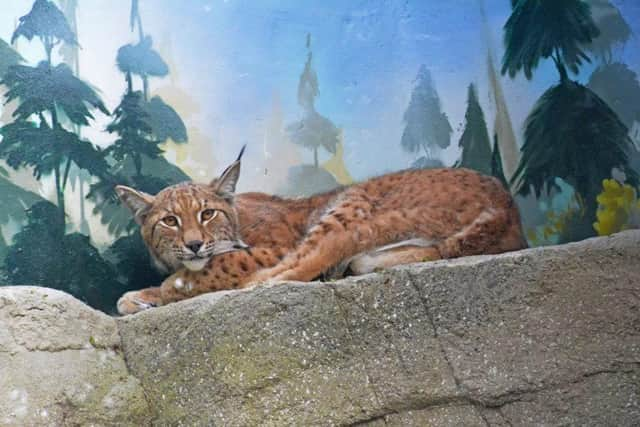Drusillas welcomes Eurasian Lynx brothers to the park
and live on Freeview channel 276
The feline brothers, who have just turned two years old, were born at Wild Place Project in Bristol and moved to the zoo in Alfriston last week.
The zoo said the transfer of the pair followed a year of careful planning, including a quarter million pound construction project of a custom-built, naturalistic enclosure designed to recreate their native European woodland habitat.
Advertisement
Hide AdAdvertisement
Hide AdHead Keeper, Gemma Romanis, said: “It’s always huge news welcoming a new species to the Park, and our team are so excited to work with Europe’s largest wild cat, and for Drusillas to be home to a European carnivore.”


“It’s a privilege to have the opportunity to work with such an incredible species, for many of our team for the first time, and I can’t wait to start building up a relationship with the boys, introduce some training, and see them flourish here at the Park.”
“We have been working really hard over the last nine months to ensure everything is perfect for them, from enclosure design to diet plans, enrichment and training programmes, and also chatting at length with their previous keepers and the wider zoo community to really learn how we can guarantee their needs are met.”
“Everything about their enclosure has been carefully researched and considered as it’s important to us that all our animals have choice within their space. We’ve created many different climbing, resting, and hiding places, both warm and cool areas, a freshwater waterfall and stream, hidden away quiet spaces, specific floor covering that would feel as natural as possible to them, air filtration systems, CCTV so we can monitor their behaviour, even down to the choice of plants we’ve included which are specific to those found in their natural environment.”
Advertisement
Hide AdAdvertisement
Hide AdThe Eurasian lynx is Europe's third largest predator and used to be native to Britain before being eradicated about 1,300 years ago by hunting and loss of habitat, By the early 19th century, it was persecuted to local extinction in western and southern European lowlands, but survived only in mountainous areas and Scandinavian forests.